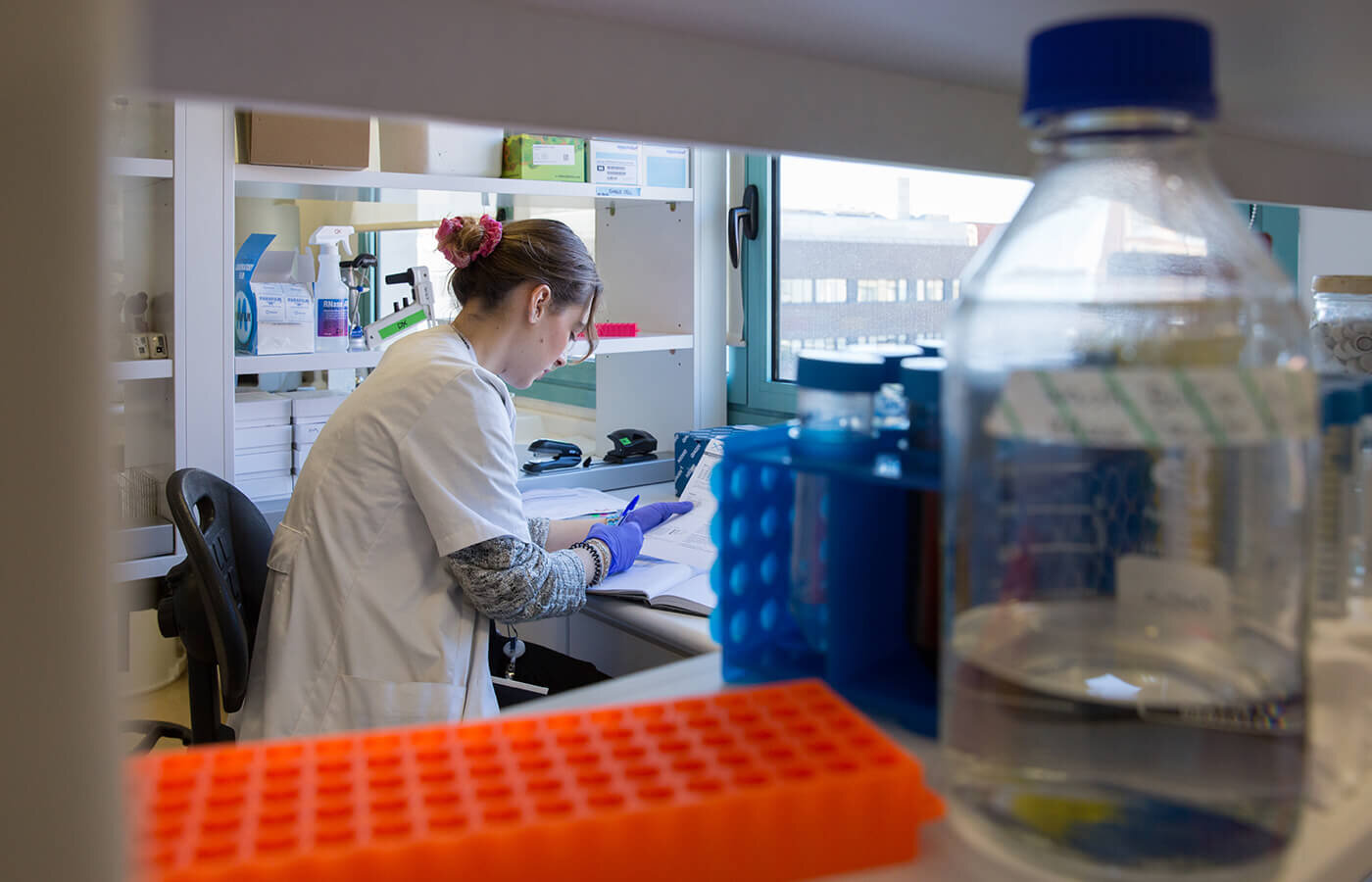Paediatric Cancer Epigenetics
Research Program
Paediatric Cancer
Investigadors principals
Where we are
 SJD Barcelona Children's Hospital
SJD Barcelona Children's Hospital
Related websites
Developmental tumours are biologically distinct from adult cancers: They do not display high levels of mutational accumulation, but instead are characterized by epigenetic deregulation. In the Paediatric Cancer Epigenetics Lab we ask fundamental questions about the biology of developmental tumours: How does epigenetic dysregulation lead to cancerogenesis? Which progenitor cells are amenable to epigenetically-driven maligant transformation? What makes these progenitors especially susceptible, and can their transformation be reversed?
Our overall goal is to identify the specific epigenomic vulnerabilities of developmental tumours, and to exploit them in the pursuit of personalized therapiesto improve patient welfare and prognosis. We belive that one size does not fit all, and we need to treat the individual, not the disease.
The group’s main focus is on malignant rhabdoid tumours (MRTs): highly malignant and heterogeneous paediatric cancers, characterized by biallelic inctivation of the SWI/SNF chromatin remodelling complex subunit SMARCB1. Functional loss of SMARCB1 is the only recurrent alteration in MRTs, making them the purest example of epigenetically driven tumourigenesis to date
Research lines
- The epigenome of MRTs is altered as a result of functional SMARCB1 loss. However, which of the numerous changes are responsible for malignant transformation is unknown. Using (epi)genomic approaches and gene editing, we are teasing apart the epigenomic changes that drive malignant transformation from those that are mere bystanders. With this knowledge we will focus therapeutic development to target the drivers of this disease.
- MRTs are a highly heterogeneous disease that can arise in multiple organs. However, the cell(s)-of-origin of the disease remain enigmatic. Using lineage tracing and computational biology methods, we are investigating the origins of different subtypes of MRTs.
- Some MRTs have an abundant immune cell infiltrate, while others are completely immune cold. We are investigating the source of immunogenicity in MRT tumours, and assessing how it could be exploited for treatment (e.g. using immunotherapy).
Scientific objectives
- Characterise MRT disease heterogeneity on cellular, transriptomic and epigenetic levels to aid disease sublassification and patient stratification.
- Identify the epigenomic aberrations of MRTs that are causal for malignant transformation.
- Evaluate if "bystander" epigenomic alterations could be therapeutically exploited.
- Identify the cell-of-origin of different MRT subtypes.
- Pinpoint the source of immunogenicity in MRT subsets, and assess whether it can be exploited therapeutically.
- Assess how epigenetic targeting can synergise with standard-of-care treatment to improve patient prognosis.
Area/Field of expertise
Our work relies on multi-disciplinarity, promoting the integration of cell and molecular biology techniques, lineage tracing, CRISPR/Cas9 genome editing, cytometry, microscopy, cancer (epi)genomics and computational biology. Our team has ample expertise in experimental and computational biology approaches.
The close association between the IRSJD and SJD Barcelona Children's Hospital aims to bridge the gap between bench and bedside, ultimately aiming to identify novel therapeutic intevention points to improve patient prognosis and welfare.

Group members
-

Group leader

Postdoc researcher
Last publications
Avgustinova A, Laudanna C, Pascual-García M, Rovira Q, Djurec M, Castellanos A, Urdiroz-Urricelqui U, Marchese D, Prats N, Van Keymeulen A, Heyn H, Vaquerizas JM, Benitah SA. Repression of endogenous retroviruses prevents antiviral immune response and is required for mammary gland development. Cell Stem Cell (2021). JIF (JCR): 20.86; Q1.
Garcia-López M, Rodriguez-Hernandez CJ, Mateo-Lozano S, Pérez-Jaume S, Gonçalves-Alves E, Lavarino C, Mora J and de Torres C Parathyroid hormone-like hormone plays a dual role in neuroblastoma depending on PTH1R expression. MOLECULAR ONCOLOGY 2019. 13(9): 1959-1975
Avgustinova A, Symeonidi A, Castellanos A, Urdiroz-Urricelqui U, Sole-Boldo L, Martin M, Perez-Rodriguez I, Prats N, Lehner B, Supek F, Benitah SA. Loss of G9a preserves mutation patterns but increases chromatin accessibility, genomic instability and aggressiveness in skin tumours. Nat. Cell Biol. 20, 1400-1409 (2018). JIF (JCR): 17.728; Q1.
de la Escosura-Muñiz A, Espinoza-Castañeda M, Chamorro-García A, Rodriguez-Hernandez CJ, de Torres C and Merkoçi A In situ monitoring of PTHLH secretion in neuroblastoma cells cultured onto nanoporous membranes. BIOSENSORS & BIOELECTRONICS 2018. 107: 62-68.
Li H, Yao Q, Mariscal AG, Wu X, Hulse J, Pedersen E, Helin K, Waisman A, Vinkel C, Thomsen SF, Avgustinova A, Benitah SA, Lovato P, Norsgaard H, Mortensen MS, Veng L, Rozell B, Brakebusch C. Epigenetic control of IL-23 expression in keratinocytes is important for chronic skin inflammation. Nat. Commun. 9, 1420 (2018). JIF (JCR): 11.878; Q1.
Projects
Ayudas para contratos Ramón y Cajal (RYC) 2019. Beneficiario: Alexandra Avgustinova
Leader Alexandra Avgustinova
Announcement Ayudas para contratos Ramón y Cajal (RYC) 2019
Code RYC2019-027738-I
Starting date 2020
End date 2025
Funded by Ministerio de Economía Y Competitividad (MINECO)


 SJD Barcelona Children's Hospital
SJD Barcelona Children's Hospital 
